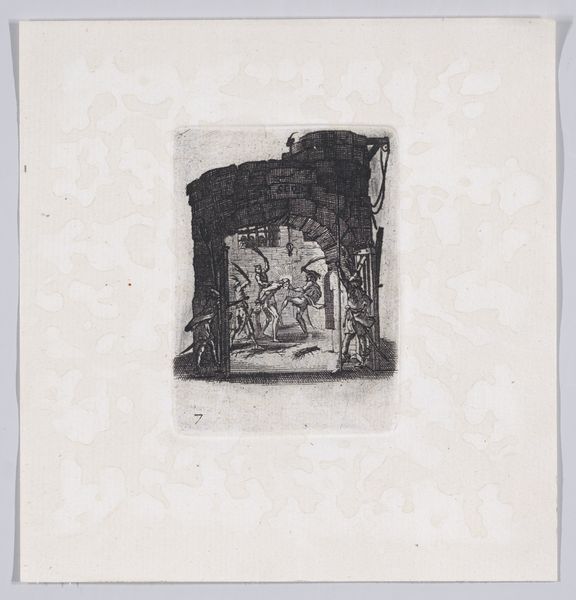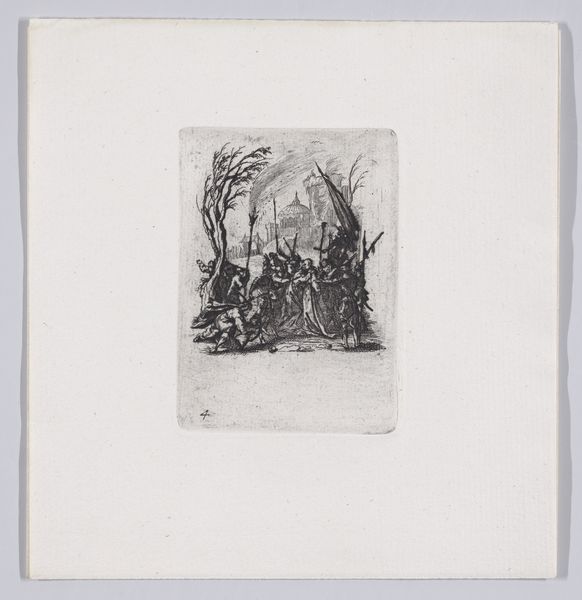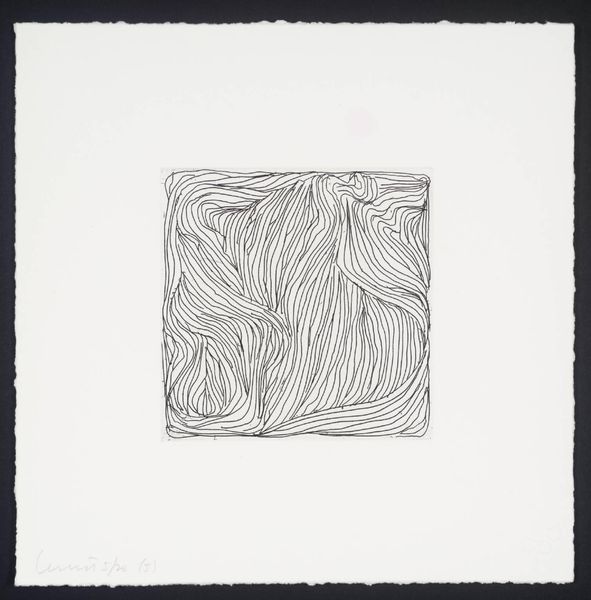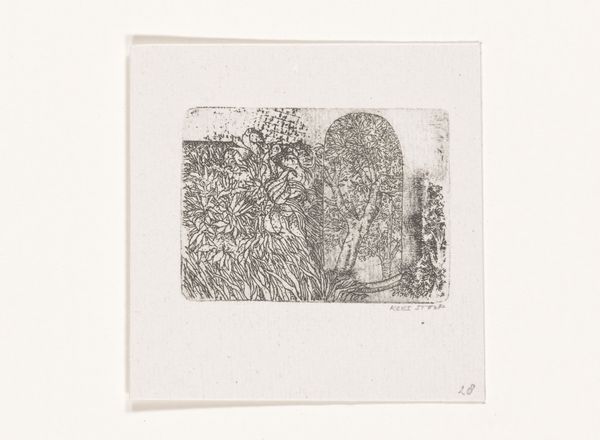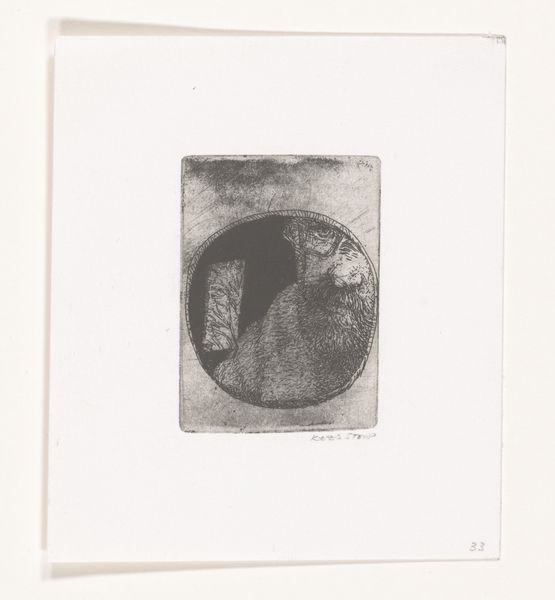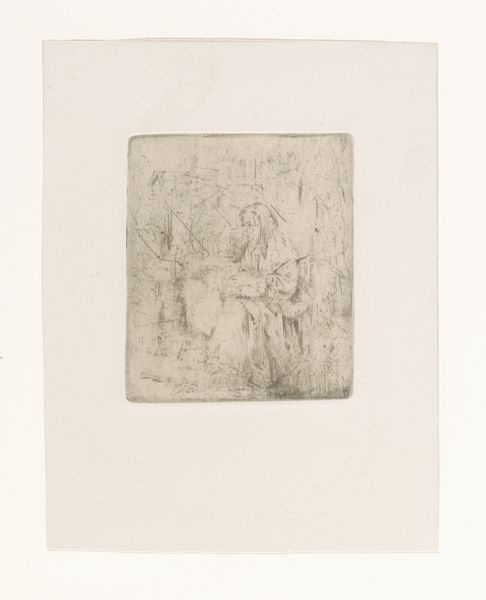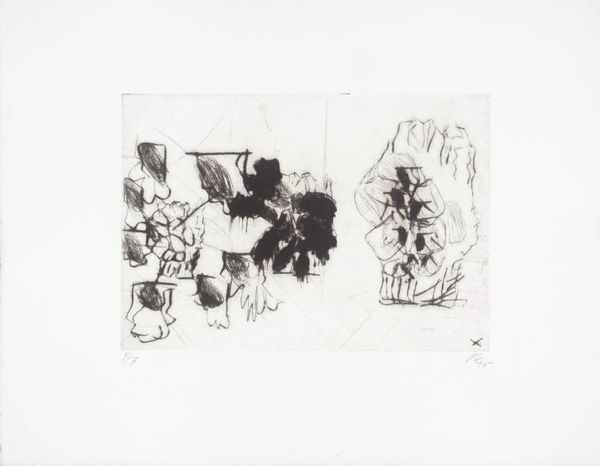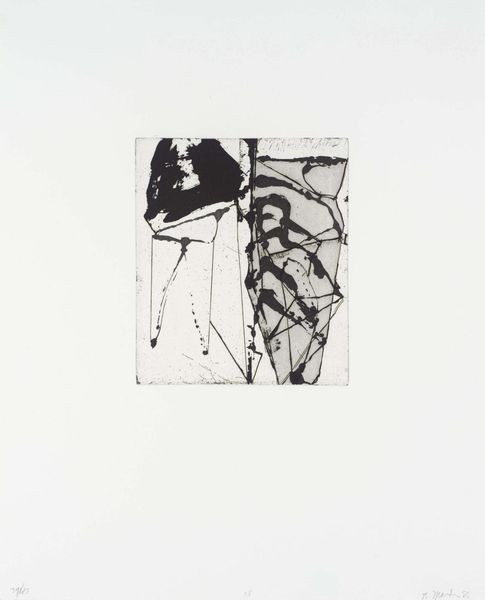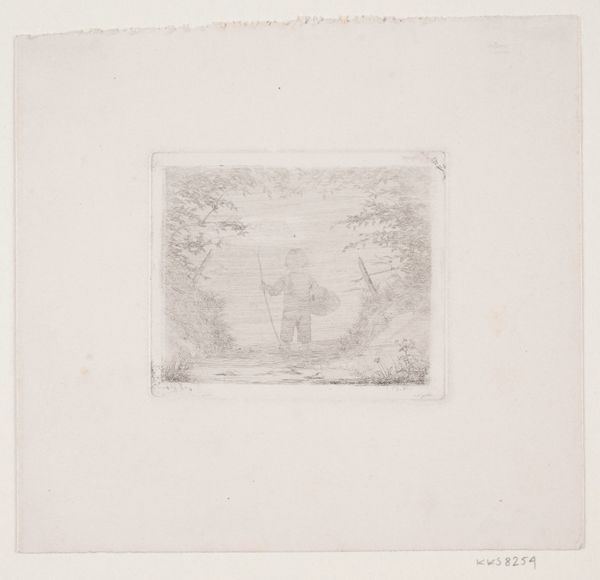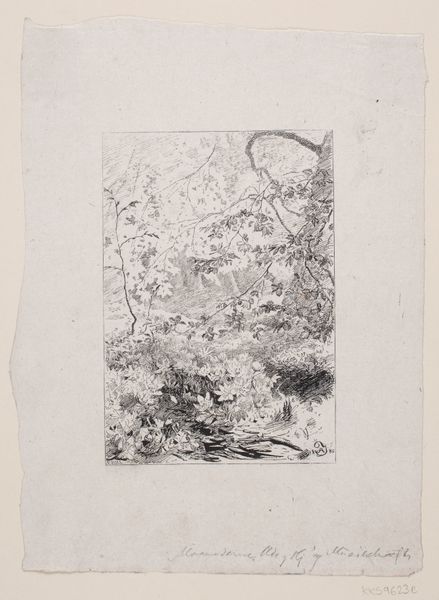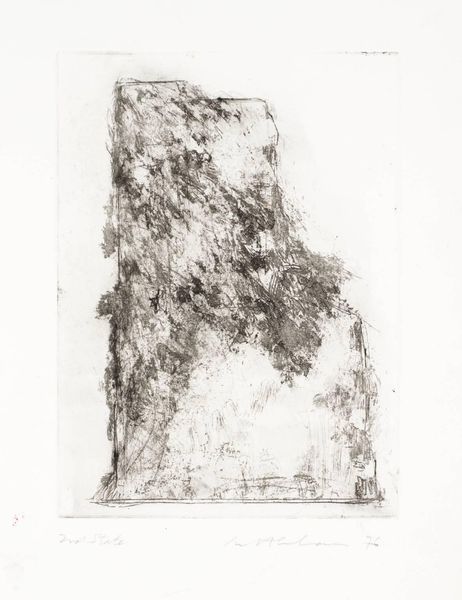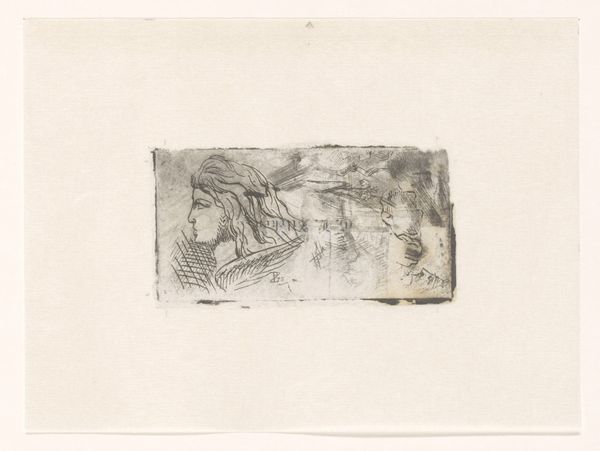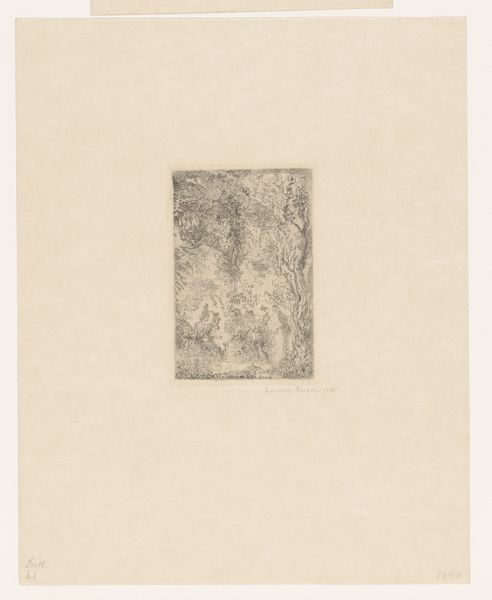
Reverse Copy of Jésus au Jardin des Oliviers (Jesus in the Garden of Olives), from La Petite Passion (The Little Passion) 1624 - 1700
0:00
0:00
drawing, print, etching
#
drawing
#
baroque
# print
#
etching
#
landscape
#
figuration
Dimensions: Sheet: 5 3/8 x 5 3/16 in. (13.7 x 13.2 cm) Plate: 2 13/16 x 2 1/16 in. (7.1 x 5.3 cm)
Copyright: Public Domain
Curator: What a delicate scene. We are looking at an etching from between 1624 and 1700, titled *Reverse Copy of Jésus au Jardin des Oliviers,* or *Jesus in the Garden of Olives*, part of *La Petite Passion*. The artist is anonymous. Editor: The figures seem lost in thought, cloaked in a profound melancholy. I am curious to explore the weight of those feelings captured within this visual narrative. Curator: It’s significant, I think, to view this within the historical context of religious art. Works like this were integral to Baroque religious expression, reinforcing faith during a period of great social and political upheaval, reminding viewers of their morality. This particular composition offers a narrative of suffering and salvation. It invites reflection on power dynamics inherent within religious structures and how they impact individuals' beliefs and behavior. Editor: The garden setting itself contributes heavily to the symbolic weight. Note the presence of the tree. Trees appear as frequent characters throughout cultural history, holding multiple meanings; however, in religious iconography the tree can be symbolic of knowledge, the connection between heaven and earth, the presence of a living deity, or conversely, original sin. Curator: Precisely, and considering the title and the clear depiction of Jesus, the association with the Garden of Eden is nearly impossible to ignore. It represents a space of intense spiritual struggle and decision, mirroring humanity's own moral crossroads. The angels present above suggest a divine acknowledgment and judgment upon these internal struggles, reminding viewers that power often resides in those observing and interpreting from above, and not with the individual within a dilemma. Editor: Absolutely. The iconography present asks viewers to consider: what larger mythos do the components draw upon? How can we use the resulting associations as tools to examine our own psychology? Consider the choice to portray Christ with humility or with dignity. Note the positioning of the other figures relative to his position in the center of the composition; note the contrast in shadow used to highlight various bodies. These considerations add up to an entire philosophy, and a message as old as the hills. Curator: In a sense, then, this piece encourages critical questioning of established religious norms. The artist creates a space for dialogue, both in his time and continuing into ours. What values do we carry, and whose burdens do we take on willingly or unknowingly? Editor: Indeed. It really shows how deeply the dialogue between image and experience echoes through time.
Comments
No comments
Be the first to comment and join the conversation on the ultimate creative platform.
